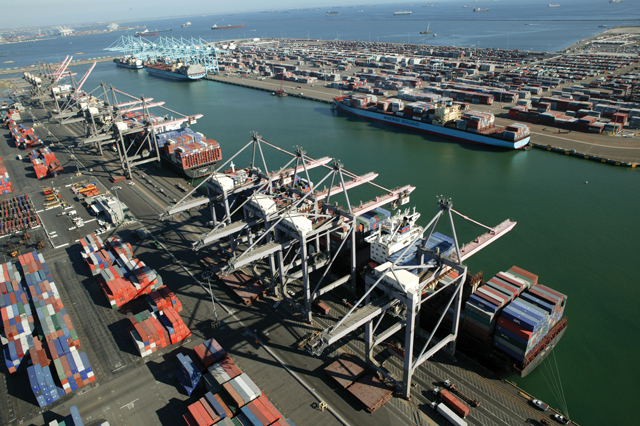
California politicians and representatives of various business segments of Los Angeles met with Chinese counterparts earlier this month at the California-China Business Summit to talk about pressing trade concerns.
Trade tensions are high between the U.S. and China under President Donald Trump’s administration, and the summit was seen by attendees and organizers as a normalizing influence.
Peter Shiao, the chairman of ChinaWeek, a nonprofit group that helped organize the third iteration of the summit this year, said the event was especially important due to the heightened tensions.
“America and China are important trade partners,” Shiao said. “Like all relationships, you need to check in, to talk. It’s good that both the governments are communicating.”
The third annual summit was held in the aftermath of a Trump announcement last month implementing $50 billion in new tariffs on Chinese goods, retribution for what the president claimed was U.S. intellectual property theft by Chinese actors. China responded within hours, announcing its own $50 billion set of tariffs on U.S. goods.
The recent developments were on the minds of the attendees at the event, held at the Beverly Hilton. Some 150 Chinese delegates represented eight different provinces and included a mixture of trade officials and private businesses.
Panels addressed a range of topics including e-commerce, advanced manufacturing, artificial intelligence, cleaner tech and geopolitics.
Shiao said that he had confidence in the L.A. region, as the region’s size and diverse economy would help it withstand uncertainty in trade negotiations.
“The local industry here – Hollywood, Silicon Beach, manufacturing – we don’t see any of these going away,” Shiao said. “I am optimistic because the synergies and growth patterns are still there.”
California Governor Jerry Brown told an audience at one session that the state remained steadfast in working with its Chinese trade partners and quipped “this too shall pass” in alluding to the Trump administration.
Meanwhile, President Trump tweeted on May 13 that China and the United States were working well together on trade. “…but past negotiations have been so one sided in favor of China, for so many years, that it is hard for them to make a deal that benefits both countries. But be cool, it will all work out!”
Port Space for SpaceX
The Los Angeles City Council approved plans May 8 to allow Space Exploration Technologies Corp. to build and operate a research, design and manufacturing facility for rockets and spacecraft at the Port of Los Angeles.
The initial 10-years lease was granted for SpaceX with options for two, 10-year extension, according to documents filed by the council. Rent is $1.38 million per year, with adjustments to made annually based on Consumer Price Index fluctuations.
The approval documents also state that SpaceX can offset a total of $44.1 million in rent by improving the Terminal Island site at Berth 240, where its facility will be located, during the lease term.
SpaceX plans to manufacture its BFR rockets at the facility. According to media reports, Chief Executive Elon Musk has said that the BFR system will replace the company’s existing rockets, the Falcon 9 and Falcon Heavy, the latter which debuted in February.
Port of Long Beach
Fitch Ratings Inc., one of the big three credit ratings agencies in the country, gave an ‘AA’ rating on $993 million in senior lien Port of Long Beach harbor revenue bonds and notes issued by the City of Long Beach, according to a report released last week.
According to Fitch’s website, an AA rating on bonds denote expectations of very low default risk. The only higher ratings are AA+ and AAA.
The report said that the ratings reflected the port’s strong market position, “with resilient revenues from long-term contractual guarantees that are sufficient to cover both the port’s outstanding senior debt obligations…”
The Port of Long Beach is the country’s second largest port by container volume. Fiscal year 2017 saw the port handle 7.23 million 20-foot-equivalent units, a 4 percent increase year-to-year. The increase came in partly due to recovery from the loss of two shipping lines: Hanjin which went bankrupt in Aug. 2016 and the move of CMA CGM to Port of Los Angeles.
“The port’s ability to handle larger ships, sizable local market share, and strong representation across the newest shipping alliances position the port favorably even as the shipping industry continues to see consolidation,” the report stated.
Staff reporter Shwanika Narayan can be reached at [email protected] or (323) 556-8351.
